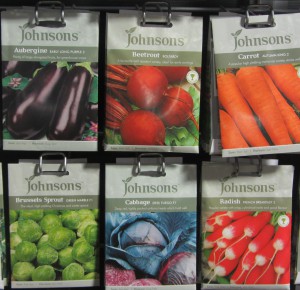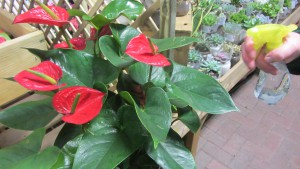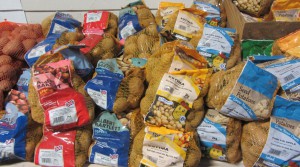January 9, 2018 by Cherry Lane
Not being the busiest month of the year in the garden, January is a time to plan for the milder months ahead, to think about what you want to achieve this year. January does sometimes throw us a bright, relatively mild day however, so below are a few tasks to do indoors, and a few for out.
Plan your vegetable plot. Go over your veg growing notes from last year (If you haven’t kept records of the past year’s varieties, harvests and such, add it to your New Year’s resolutions!). Decide on which of last year’s varieties you wish to keep, and if you’ve had shortages or gluts of these, then tweak the amount you’re growing to suit. Consider any new vegetables you might wish to grow, and make a note of any compost, tools, or labels you might need. Then bring in your shopping list to your local Cherry Lane Garden Centre and get what you need for the season ahead!
Keep your houseplants healthy. At this cold time of year, central heating can cause dry air, which is detrimental to the foliage of most houseplants. To counteract this, humidify the air around plants by either spraying regularly with a fine mist, or half-fill a gravel tray with water and sit your plants on the stones (make sure they are not in the water).
Start chitting potatoes. When the seed potatoes arrive in our stores in January, they cause a lot of interest with the customers. This is probably because Potatoes are one thing you can get started with even when the snow is covering the ground! Pick your potato varieties carefully, making sure you have types to keep you in spuds from June into the next spring. First Earlies, Second Earlies, Salads and Maincrops – the range can be confusing if you’re new to it, but feel free to ask us for clarification or advice. When you get them home, place them in a single layer in seed trays with the end with the most ‘eyes’ up – this is called the ‘rose end’. Place the trays in a bright but frost free place to chit.
Prune apple and pear trees. Winter is the best time to prune apples and pears, but don’t prune cherries, plums or apricots this time of year, wait until spring for this. If your tree is young, then by pruning you should be forming the correct framework of an open centred, goblet shaped tree that will fruit well in future years – always prune to just above a bud that faces out of the tree. For a tree that is 4 years old or more, then maintaining the shape and health of the tree will become your task – always take out any diseased, died back or damaged wood. Apples can be tip or spur bearing depending on the variety, and this will affect the way they are pruned. For more information, ask one of our experts instore. Note: Apples and pears that are grown as espaliers & cordons are pruned in summer rather than winter.
Protect autumn planted trees and shrubs. Hard frosts and strong winds can have the effect of lifting roots of newly planted stock, so periodically check any hedges, shrubs and trees that went in over the last 4-5 months, and firm in the root balls if this has happened. Mulching well around roots of plants with dry bark chippings can help to stop the frost, and staking with stout bamboo canes pushed well into the ground can help where the shrubs are tall enough to be affected by wind.
Cut back ornamental grasses. Narrow bladed grasses like Festuca & Carex can be cut back to just above ground level now, before the new growth starts appearing in spring. Likewise any broad leaved grasses that have died back for the winter, such as Hakonechloa and Miscanthus can be cut right down. This will ensure that the grasses look fresh and bright, with no dead foliage showing.







